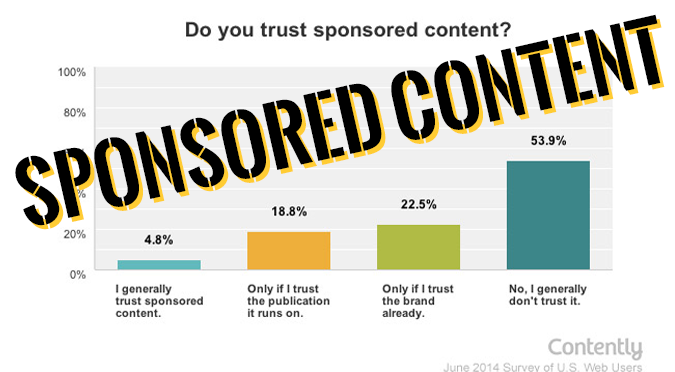Content Credibility Comes From Keeping it Real – and FTC-Compliant
Mar 03, 2016 / By Vanessa Horwell
Three simple words should guide content marketing initiatives: "Keep it real."
Not only is it good business practice to keep articles, blog posts, reviews, testimonials and advertisements on the up-and-up, it's also the law.
The Federal Trade Commission issues specific guidelines for marketers and advertisers around the "content" they create, sponsor, promote and post online, and the most recent update covers a broad swatch of online media, blogs, video posts, testimonials, social media and marketing/advertising.
The FTC isn't afraid of enforcement, either. Just ask "brain-training" company Lumosity, which paid $2 million in fines for deceptive testimonials and unsubstantiated claims. Or ask four New York companies recently targeted by the New York Attorney General for fake or paid-for reviews on Yelp and Craigslist, or for not disclosing that the creators of YouTube video testimonials were paid to do so.
The FTC guidelines that govern content focus primarily on the authenticity of online consumer reviews and testimonials, but it touches on all aspects of content and social media. For instance, anyone who publishes online content and receives some sort of incentive of payment to do so is required to disclose that information to the public in a very explicit way (e.g., "Company X gave me this product to try…")
Content marketing's goal should focus on key objectives:
- Create visibility for a company, a person, a person with specific expertise, a new idea, a concept or a product. A steady stream of content boosts search results and creates opportunities to attract followers, regular readers and newsletter/blog/LinkedIn subscribers and followers. The more authentic the copy, the more trustworthy the product/client.
- Reinforce visibility with knowledgeable insight and facts. Good content should establish a voice of authority so that readers, prospects, potential clients and outside observers want to hear what you have to say. By all means, link to factual sources, pieces of data, survey results or statistics -- "show your work," to borrow a phrase from the high school classroom, to prove its validity.
- Build trust. Good content that's well-researched and well-written makes readers feel confident in the author's ability and authority, and confidence in content can lead to sharing and re-posting (which, in turn, creates even more visibility).
"Keeping it real" means just that. Be transparent. Be honest. Don't fake it. Disclose relationships that could create even a remote impression of bias. Check your facts. With all of those elements in place, you'll be able to tell a good story that's worth believing and worthy of sharing.
Sign up for our insights on the convergence of business and PR






